Sloe gin-making in my childhood always began in early March. We were instructed to keep an eye out for the clouds of blackthorn blossom as my father drove us like the clappers through country lanes. Then in autumn, time to return to the best spots for picking the sloes. I hated the lacerations my arms incurred from the horrible thorns. But hard work and patience paid off. For, after mixing and brewing and waiting, you end up with the elixir that is sloe gin. The secret to the best-tasting concoction lies in the how and the what and the when – tightly kept secrets for every serious sloe gin maker. Which gin to use? Crack the pits for that marzipan-hint or not? Pierce the skin or not? One year or two for brewing?
The business of tasting is an event to be relished. And relished it indeed was, on Wednesday, March 1 at the Waterworks. Dennis Leeds-George has been running the competition since 2015 and David Roder, the Waterworks’ manager, ensures the running goes smoothly. The Waterworks. One of those “Why haven’t I been here more often?” neighbourhood havens. Certainly dog-friendly – I counted five, including Jordan, a simply gorgeous golden-red alsatian staying close to his owner.
A table was set up for participating concoctions – both sloes and damson entries in corked bottles and all, glorious shades of red. A judging table at a distance to ensure complete anonymity in tasting decisions. Jugs of water to cleanse the palette (although it seems beer can work just as well.) Slight confusion over scoring methodology, tasting categories and even what on earth the particular gin was. Dennis brought order to proceedings with force and tasting palette clarity. Good humour (increasingly) seemed to win the day in every discussion round.
It’s now an annual Rye tradition. And rather serious. Four judges. A score sheet. Ratings of the entries ranged from 2 all the way up to 10, with incredible alignment regarding which ones were the favourites. Words such as “smooth”, “warming”, “subtle”, “fruity”, “slightly nutty” and even “fancy this in a cocktail” were given to describe the winning tastes. “Too sweet”, “made a face”, “bitter”, “not for me at all!” described the not-so favourites.
There was much cheering and a rather nice engraved cup for the winners of each of the sloe and damson categories. The sloe gin winner was a no-show. Hopefully, the video David took of us cheering and sipping and generally creating hysteria will convey the accolades given to their gin. The damson gin winner was called “Jordan”- made by its owner, Morganne (and of course named after her stunning canine companion). It was absolutely delicious. Full of fruit notes, velvety smooth and not at all sweet. But Morganne refused to tell me her secrets in the recipe. She hinted it was the particular kind of sugar used… and told me it was only a couple of months old… but nothing more. I think that’s why Jordan kept so close to her at all times; like a good hedgerow gin recipe guard dog. Just so that I had to stop challenging her for the recipe.
Nine different gins – six sloes, and three damsons. A shot glass each. Over an hour. That’s about a nice sized glassful. Of 25% ABV pure alcohol. Maybe more. Just saying. That’s quite a lot of hedgerow elixir. The judges seemed to be having a jolly good time. In fact, with us all tasting the gins at the end (just to feel fully engaged), I believe we all had a jolly good time. Dennis tells me a little shot of sloe gin is extremely good for one’s health – and also sleep. He’s fit as a fiddle and I believe him. I slept like a log.
Image Credits: Abigail Cooper-Hansen .



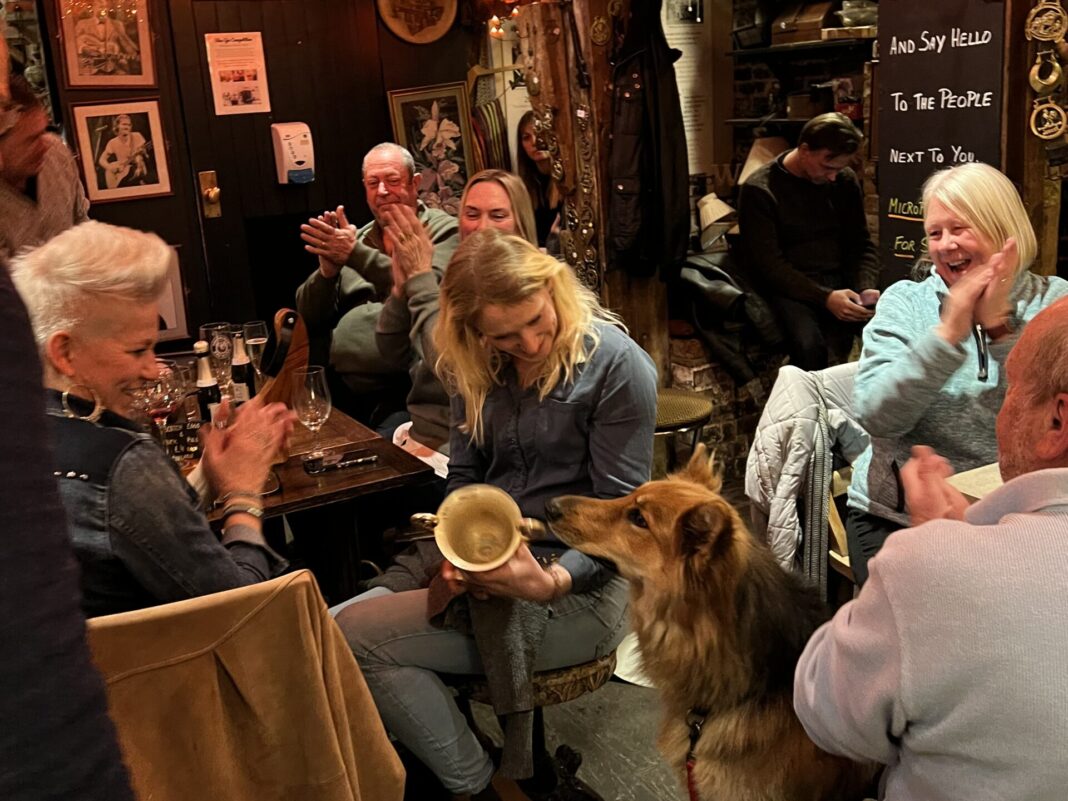
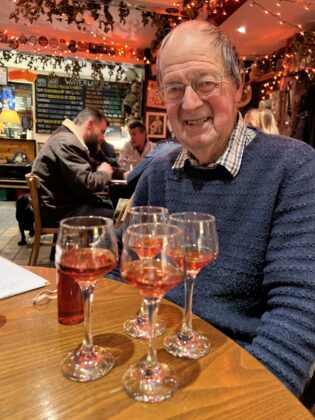

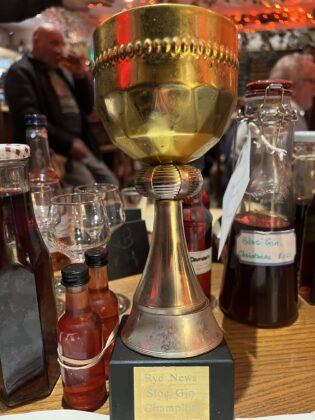
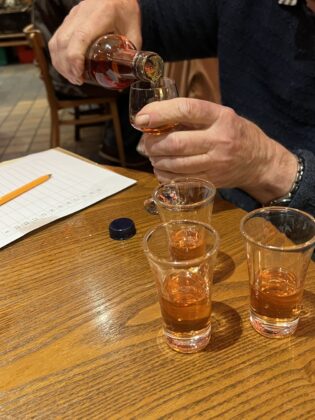
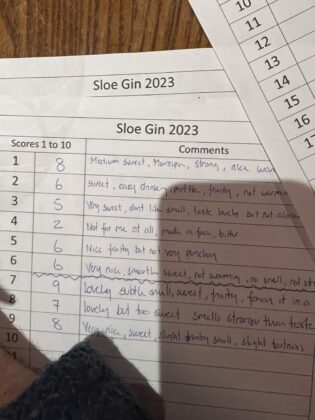

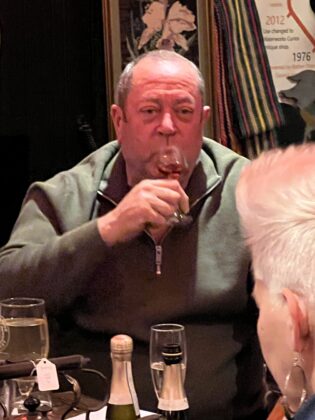
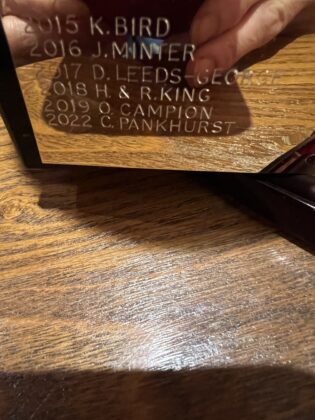
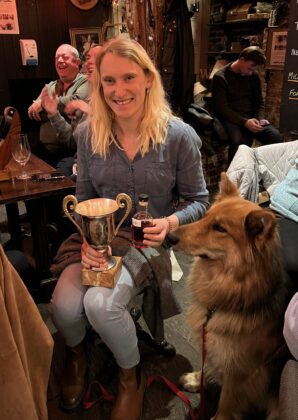
Small gripe-the German Shepher’s name is GORDON – after the famous of most famous Gin! Quite an important note!